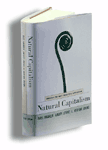 Vividly imagine value – is there a trick to valuing the future? Humans, generally, care more about the immediate at the expense of longer term. In the field of climate change it’s clear that we don’t seem to value the future as much as the present.
Vividly imagine value – is there a trick to valuing the future? Humans, generally, care more about the immediate at the expense of longer term. In the field of climate change it’s clear that we don’t seem to value the future as much as the present.
This future orientation is clearly important. Animals, for example, can act in response to the future:
When a mouse hides before a cat enters the room it is responding to an event that has not yet happened, and its ability to do so is one of evolution’s most remarkable achievements.
Humans have this ability too. But we also experience the future simulating it:
in our minds. We know… that it would be painful to go an hour without blinking… that winning the lottery would be more enjoyable than becoming paraplegic… because we can close our eyes, imagine these events… Unfortunately, the conclusions that we draw in this way aren’t always right. Trysts are often better contemplated than consummated, and sweetbreads are often better the other way around.
As Daniel Gilbert puts it, it’s notoriously difficult to get people to be farsighted. But you can get people to imagine the future more vividly.
Would you like to be 65 with an extra $100,000, is very different from imagine yourself at 65. Will you be living? What will you look like? How much hair will you have? Who will you be living with? With the imaginary scenario suddenly we feel like saving.
Daniel argues these techniques are marginal. But there are also many situations in which humans voluntarily collaborate to protect the future. When humans cooperate is the topic for the next short post.









